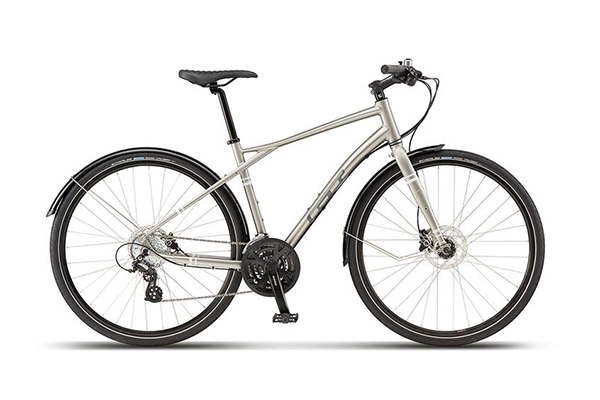Windshield wipers are an essential component of any vehicle, ensuring clear visibility during rain, snow, or any other adverse weather conditions. When it comes to choosing the right wiper blades, two popular options are silicone and rubber. In this blog post, we will explore the advantages and disadvantages of both silicone and rubber wiper blades to determine which one is better suited for your needs.
Understanding Silicone Wiper Blades:
Definition and Composition of Silicone Wiper Blades:
Silicone wiper blades are made from a blend of silicone rubber, which offers several unique properties. Silicone is a synthetic material known for its high resistance to temperature extremes and weathering.
Advantages of Silicone Wiper Blades:
a. Durability and Longevity:
One of the significant benefits of silicone wiper blades is their exceptional durability. They tend to last longer than rubber blades, withstanding harsh weather conditions, such as extreme heat, cold, and UV rays. This durability translates into fewer replacements and potential cost savings in the long run.
b. Resistance to Weathering and UV Rays:
Silicone wiper blades have superior resistance to weathering and UV rays. Unlike rubber blades that can degrade and become brittle over time, silicone blades maintain their flexibility and functionality, ensuring consistent performance.
c. Enhanced Performance in Extreme Temperatures:
Silicone wiper blades perform exceptionally well in both hot and cold temperatures. They remain pliable even in freezing conditions, preventing ice buildup on the blades, which can hinder visibility and damage the wiper system.
Potential Drawbacks of Silicone Wiper Blades:
a. Cost:
The main drawback of silicone wiper blades is their higher cost compared to rubber blades. However, considering their extended lifespan and durability, the initial investment may be offset by reduced replacement frequency.
b. Availability:
Silicone wiper blades may not be as widely available as rubber blades, particularly for certain vehicle models or in remote locations. However, their popularity is increasing, and many reputable automotive stores and online retailers now offer a variety of silicone wiper blade options.
Evaluating Rubber Wiper Blades:
Definition and Composition of Rubber Wiper Blades:
Rubber wiper blades are traditionally made from natural rubber or a combination of natural and synthetic rubber compounds. They have been the standard choice for wiper blades for many years.
Advantages of Rubber Wiper Blades:
a. Cost-effectiveness:
Rubber wiper blades are generally more affordable than silicone blades, making them a popular choice for budget-conscious consumers.
b. Wide Availability:
Rubber wiper blades are widely available in various sizes and models, ensuring compatibility with most vehicles. They can be easily found in automotive stores and online retailers.
c. Adequate Performance in Normal Conditions:
In normal weather conditions, rubber wiper blades provide satisfactory performance. They effectively clear water and light debris from the windshield, ensuring good visibility for most daily driving situations.
Limitations of Rubber Wiper Blades:
a. Reduced Lifespan:
Rubber wiper blades tend to have a shorter lifespan compared to silicone blades. The rubber material is more susceptible to wear and tear, leading to decreased performance and the need for more frequent replacements.
b. Susceptibility to Weathering and UV Rays:
Over time, rubber wiper blades can degrade due to exposure to UV rays and harsh weather conditions. They may become brittle, crack, or leave streaks on the windshield, compromising visibility and requiring replacement.
c. Inefficiency in Extreme Temperatures:
Rubber blades may struggle to maintain optimal flexibility in extremely cold temperatures, resulting in reduced effectiveness in clearing ice or snow from the windshield.
Factors to Consider When Choosing Wiper Blades:
Climate and Weather Conditions:
Consider the typical weather conditions in your region. If you frequently experience extreme temperatures, heavy rain, or snow, silicone wiper blades may be a better option due to their superior performance and durability in such conditions. On the other hand, if you live in a milder climate with occasional rain, rubber wiper blades may suffice.
Driving Habits and Usage Frequency:
Evaluate your driving habits and the frequency at which you use your vehicle. If you drive frequently or for long distances, silicone wiper blades’ longevity and resilience make them a worthy investment. However, if your vehicle sees lighter use, rubber wiper blades could be a more cost-effective choice.
Cost Considerations:
Assess your budget and weigh the upfront cost versus the long-term value. While silicone wiper blades may have a higher initial cost, their extended lifespan may offset the investment by reducing the frequency of replacements. Rubber wiper blades, on the other hand, have a lower initial cost but may require more frequent replacements.
Long-Term Value and Durability:
Consider the overall value and durability of the wiper blades. Silicone wiper blades’ resistance to weathering and UV rays, along with their enhanced performance in extreme temperatures, may provide greater long-term value, especially if you plan to keep your vehicle for an extended period.
FAQs:
Are silicone wiper blades worth the higher cost?
Silicone wiper blades may have a higher initial cost compared to rubber blades. However, their durability and extended lifespan can make them worth the investment in the long run. If you frequently encounter extreme weather conditions or prioritize long-term value, silicone wiper blades are a worthwhile choice.
Can I use silicone wiper blades on any vehicle?
Silicone wiper blades are available in various sizes and can fit most vehicles. However, it’s important to check the compatibility of the specific blade model with your vehicle’s make and model. Refer to the manufacturer’s guidelines or consult an automotive expert for assistance.
Do rubber wiper blades perform adequately in all weather conditions?
Rubber wiper blades perform well in normal weather conditions, such as light rain or drizzle. However, in extreme temperatures, heavy rain, or snow, their effectiveness may be reduced. Rubber blades can become less flexible in freezing temperatures and may struggle to clear ice or snow effectively.
How often should I replace wiper blades?
The frequency of wiper blade replacement depends on various factors, including usage, weather conditions, and the type of blade. As a general guideline, it’s recommended to replace wiper blades every six months to one year, or as soon as you notice reduced performance, streaking, or damage. Regular inspection and maintenance are key to ensuring optimal visibility.
Can I replace just the rubber insert on my wiper blades?
Some wiper blade models allow for the replacement of the rubber insert only, while others require replacing the entire blade assembly. Consult the manufacturer’s instructions or refer to the specific wiper blade model to determine whether the rubber insert can be replaced separately.
Are there any special care instructions for silicone wiper blades?
Silicone wiper blades generally require minimal maintenance. Regularly cleaning the blades with a mild detergent and water solution can help remove dirt and debris. Avoid using harsh chemicals or abrasive materials that could damage the blade surface. Additionally, it’s important to periodically inspect the blades for any signs of wear or damage.
Conclusion:
Both silicone and rubber wiper blades have their advantages and limitations. Silicone wiper blades excel in terms of durability, resistance to weathering and UV rays, and performance in extreme temperatures. They are particularly suitable for those who frequently drive in harsh weather conditions. On the other hand, rubber wiper blades offer cost-effectiveness and wide availability, making them a practical choice for milder climates and lighter usage.
Considering your specific needs, climate, driving habits, and budget, it’s important to weigh the pros and cons of each option. Ultimately, the decision between silicone and rubber wiper blades depends on finding the right balance between performance, longevity, and cost.
For optimal results, prioritize regular maintenance and cleaning of your wiper blades, regardless of the material. Clean the blades periodically, inspect for damage or wear, and replace them promptly when necessary. By choosing the most suitable wiper blades for your vehicle, you can ensure clear visibility and safe driving in all weather conditions.



